In the mid 1960s, Joseph Mawra directed four cult films featuring a sadistic criminal, drug-runner, and brothel madame called Olga; the titles alone seemed enough to guarantee box office success… White Slaves of Chinatown, Olga’s House of Shame, Olga’s Girls, and Mme. Olga’s Massage Parlor.
But the films were even more outrageous than their titles suggested – full of bondage, torture, sexual violence, and drug use.
They also stood out for their striking black and white cinematography, disorienting camera angles, and a chilling lead performance by the striking Audrey Campbell.
They were produced by George Weiss, who had financed Ed Wood’s infamous Glen or Glenda.
The films shocked and thrilled audiences, were busted for obscenity, and were involved in court cases that dragged through the highest courts.
So who was the enigmatic man behind this singular vision? What kind of person could have presented such a catalog of taboo acts? And was he actually a Cuban immigrant called Jose Prieto?
For over 50 years, the director has turned down requests for interviews, and in fact, has thought very little about the films he made in the 1960s.
The Rialto Report tracked him down to speak with him and finally solve the mystery: What kind of fevered mind could have been responsible for these films?
Well, as it turns out, Joseph Mawra was a mild-mannered part-time joke writer who directed exploitation films in his spare time.
There has been much misinformation about him over the years. Now he tells his story.
White Slaves of Chinatown and Olga’s House of Shame are available from Something Weird Video.
Olga’s Girl is available from Synapse Films.
________________________________________________________________________________________
1. Joseph Mawra: Beginnings
Where do you come from?
I grew up in Queens in New York.
What were your favorite films when you were a kid growing up?
I liked comedies like Abbott and Costello. They had some routines that were priceless. I still like them actually… as well as Groucho Marx and others. These were the original slapstick comedians.
I understand that you went to Hofstra University back in the 1950s – is that correct?
Yes, I was at Hofstra University between 1956 and 1959. I did courses in various subjects – including English and creative writing in the evening.
After that, did you get work writing?
Yes, I was writing jokes and comedy. Mainly freelance. We’d go up to the NBC studios, sit around, and meet the talent there.
You’d meet people who’d say, “Could you do some writing? Do you want to write a couple of jokes? Send them in.”
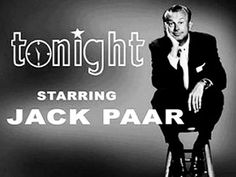 That’s how we started. That’s how a lot of people started in the business. Jack Paar, who hosted The Tonight Show from 1957 to 1962, was one of the guys there, and his staff writers would give you $50 for a joke. We were never salaried; they just paid us by the joke.
That’s how we started. That’s how a lot of people started in the business. Jack Paar, who hosted The Tonight Show from 1957 to 1962, was one of the guys there, and his staff writers would give you $50 for a joke. We were never salaried; they just paid us by the joke.
There were several of us at that time and it was fun. We were young, struggling writers, but we were developing our skills and we weren’t looking for anything too steady.
I also had friends that worked for the Goodson-Todman quiz shows that were big in New York at the time. They weren’t getting paid much either. They got around $150 a week. I’d write material with them as well and we’d split the money.
And so that’s what we did for 5 or 6 years.
*
2. Filmmaking
How did you go from there, from writing jokes, into the film industry?
I met this fellow called Arnold Black. He was doing short films on sports… mainly baseball, and he’d tack on commercials from merchandising companies… He’d have his own narrators add voice-overs.
He never got paid any money – but he’d get the merchandise.
I met him and he said, “Can you do some film editing and write copy for the voice-overs?” I’d done a little editing at that point for friends of mine, so I said “Sure”.
He was living in an apartment somewhere in the East 80s in Manhattan, and he had a separate room where he had all the editing equipment, so that’s where I’d go and do the work.
Did you do other editing jobs?
I drifted into doing trailers for motion pictures. And I did some advertising spots and writing too.
So you didn’t have any formal film training? You didn’t go to film school…?
No, I never went to any film school.
After a while I started working with Stanley Borden.
Stanley Borden (1919-1991) was the owner of American Film Distribution Corporation, a distributor of American sexploitation films and some European imports.
Borden started out in the music business as general manager of Unique Records in 1955, a New York pop music record label that had a few small pop hits in the late 1950s. Borden left Unique Records after they were bought out by RKO, and went on to finance the creation of Island Records, the legendary record label founded by Chris Blackwell. Island’s artist roster soon included The Spencer Davis Group, Fairport Convention, Free, Roxy Music, King Crimson, Traffic, and The Wailers.
Borden then started his own record label, After Hours, before moving into the film industry in the early 1960s when he formed his own company to distribute and produce movies.
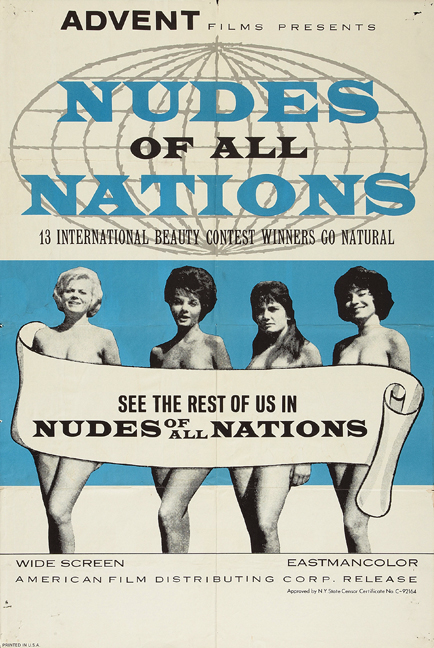 One of Stanley Borden’s American Film Distributing Corp’s first releases
One of Stanley Borden’s American Film Distributing Corp’s first releases
What do you remember about Stanley Borden?
Stanley was a good man. He had an office at the Edison Hotel at 228 West 47th St. If you went into the hotel, walked up a few steps to the mezzanine floor, his office was in there. Stanley had that office for years.
How did you meet Stanley?
I think I met Stanley through George Weiss. How I met George Weiss I just don’t remember…
George Weiss was a film producer best known for financing the exploitation film Glen or Glenda (1953) directed by Ed Wood. The film was loosely inspired by the sex reassignment surgery of Christine Jorgensen, which made national headlines in the U.S. in 1952. Weiss commissioned a movie to exploit it, hiring Ed Wood to direct it after Jorgensen declined several offers to appear in the film herself. Wood convinced Weiss that his own transvestism made him the perfect director despite his modest resume.
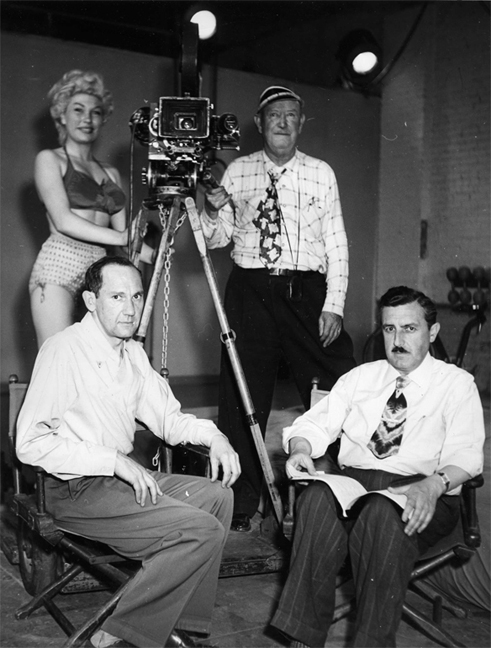 George Weiss (early 1950s) (left)
George Weiss (early 1950s) (left)
By the early 1960s, Weiss had moved back to New York and was living in Queens, looking to get back into the film business. Weiss and Stanley Borden shared a similar view of the low-rent movies they wanted to make and their partnership was a natural fit.
What do you remember about George Weiss?
I got to know him pretty well, and liked him a lot.
He looked like an elderly gentleman even at that time, older than Stanley. His gait was slow like an old man. Stanley and George had known each other for several years; they also got on well because of their interest in making low budget films that made good money.
*
3. The ‘Olga’ films
Joseph Mawra made four films in the Olga series over a two year period. These were White Slaves of Chinatown (1964), Olga’s Girls (1964), Olga’s House of Shame (1964), and Mme. Olga’s Massage Parlor (1965) (the latter has been lost for decades).
The films, shot on a shoestring in black in white, consist of the exploits of a sadistic crime boss, Olga, and feature sex, violence, and drug usage, not to mention numerous imaginative sado-masochistic torture scenes. The action however is more suggestive than explicit – there’s little flesh on display, and the violence is more implied than shown.
Was that was the inspiration for the first Olga movie?
One day George and I went down to Chinatown and saw these amazing tunnels that had been used for smuggling. They were amazing, out of this world. That’s where the idea came from.
But we were just trying to get quick product into the theaters; distributors were short of product and so it was born out of necessity.
The movie was only meant to be sold locally and so we needed to make it as inexpensively as possible.
That developed into White Slaves of Chinatown. George came up with the titles.
How detailed was the script that you wrote?
I only wrote the concept at that stage. No script. The story and voice-over wasn’t written until the end when we were editing the film.
That’s why there was no dialogue. We didn’t have an idea of what the exact story would be until the end.
It was also a matter of speed. Dialogue took longer to write and film. But I could write a treatment quickly. I could literally write it overnight.
Where did you find the actresses who appeared in the films?
George would run a little ad in one of the trade papers, and the girls would come up to his office and he’d select them.
What do remember about the actress who played Olga, Audrey Campbell?
Audrey Campbell… she was a good human being. She was one of the nicest people that we dealt with. Almost everyone we worked with was very pleasant, but she was just an outstanding person.
She was an attractive girl too. Very photogenic.
I think George may have known her before we cast the film. I don’t think she came through the main casting process.
Was it difficult working with people who had little experience of acting?
Audrey had actual acting talent. You wouldn’t believe it from these films, but she was a really talented actress.
But you’d be lost if you had much dialogue with most of the other girls. With the exception of Audrey and one or two others, the rest were really not trained actresses and had no film experience.
I remember another actress called Darlene Bennett. She had a sister. I think they were twins. She was another who could act. I worked with them on some other films.
The actresses who appeared in the Olga films were mostly a combination of models and dancers in New York at the time. Audrey Campbell, in her commentary track for Olga’s Girls, mentioned that some of the girls were school teachers who even suggested their own methods of torture in the film.
One of the actresses, Alice Denham, who featured in Olga’s Girls and Olga’s House of Shame had been the Playboy Playmate in July 1956, and counted Norman Mailer, Gore Vidal and James Dean among her close friends. Her biography ‘Sleeping With Bad Boys’ was described as a ‘juicy tell-all of literary New York in the fifties and sixties.’
Another was Brenda Denaut, who had a short sexploitation career, and went on to be better known as mother of the acting Arquette siblings, Rosanna, Alexis, Richmond and David, and Oscar-winner, Patricia.
Audrey Campbell wore some striking clothes in her role as a dominatrix. Where did these come from?
I remember one of the costumes we made the night before. Me and my wife! We were sitting on the living room floor in my apartment. It was a cape, and we cut it out of material and just put it together…
Did you ever come across the New York photographer, Irving Klaw? He took photographs of Bettie Page, among others. His style was similar to the aesthetic in the Olga films.
I’ve never heard of Bettie Page or the photographer.
What do you remember about where you shot the Olga films?
We shot a lot of them in Chinatown in downtown Manhattan. We went down there and filmed in some of the warehouses – and also in the basements where they had all the tunnels.
And then we did a lot of work out in Jersey. We worked with a company called Biograph that was run by a guy called Werner Rose. He was a good cameraman.
He had a studio out there. A large barn with a sound stage. He constructed his own sets. He was on the edge of a hill and there was a funicular that took you up to the top, and that’s where he had his set-up. So we did a number of films there.
Werner also had a small office in New York. He had a shooting stage there, but primarily we’d go to his studio in Jersey.
Do you remember much about shooting the Olga films?
They were each shot in about 4 to 5 days, maybe less. The whole idea was to get the film out as quickly as possible.
George would say, “We have to get a thousand feet today. We need two reels.” That’s how he talked: “We need two reels of film by the end of the day”. Each reel was about 11 minutes. We would try and get 10 to 15 footage that we could use each day.
How many people worked with you on the production side?
It was just four or five of us. That was about it. Werner Rose was the cameraman. Herb Coleman was there too; he was Werner’s assistant, if I recall correctly. And then we had a couple of technicians.
The Olga films have all sorts of imaginative torture scenes with elaborate devices…
That was me and George and also anyone on the production. We’d sit around and come up with different ideas. Anything that wouldn’t cost much money!
The films also have a strong visual flair and sense of style. How did that come about?
We developed the style as we went along. Due to the low budget I could experiment and try things out. I did a lot of that during that time.
In a strange sort of way, it gave me good experience. It was like a film school where I could try things out.
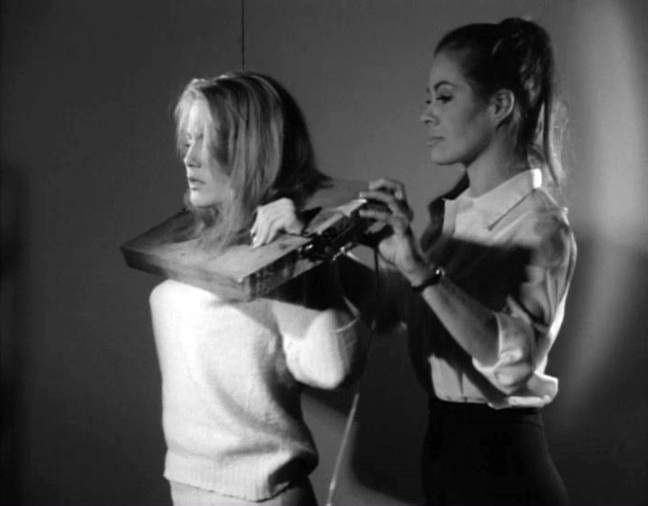 Gigi Darlene and Audrey Campbell
Gigi Darlene and Audrey Campbell
How much footage would you shoot?
Some mainstream films were shooting with a 10 to 1 ratio or even higher. Our ratio was 1.5 to 1! We used almost everything we shot. We were very tight.
We just decided on the premise for a scene, and then we shot it.
You spoke earlier of the importance of the editing process?
Yes, we decided on the exact story while we were editing it – and then I wrote the voice-over.
We had a guy called Joel Holt record the voice-over in post production. Joel Holt did a lot of voice-overs for us. He also did trailers for other motion pictures. He was a trained actor.
The editing was done on 46th St; there were a number of editing studios there.
Do you remember how much the Olga films cost?
No. The budgets were definitely low but I didn’t get involved in the money side. It wasn’t part of my job. That was George Weiss. He was the one handling the finances.
The main expense was the film stock and the talent. George made sure that everyone got paid right away at the end of the shoot. No one had to wait because the cast and crew all went off to their next jobs. Everybody was happy to get a pay day and then they just moved on.
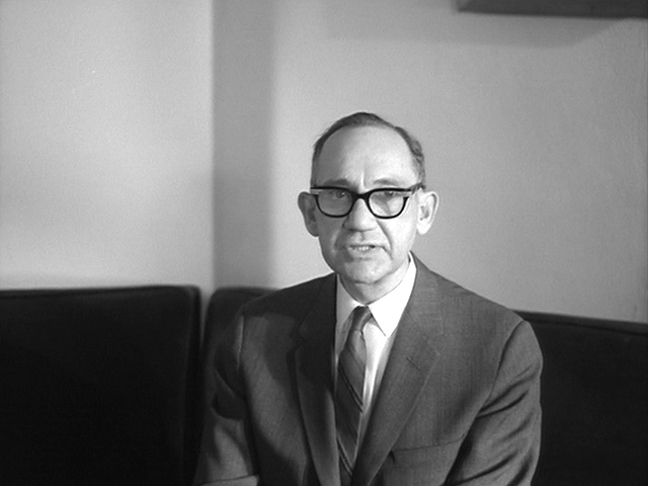 George Weiss, in ‘Olga’s Girls’
George Weiss, in ‘Olga’s Girls’
Was it difficult to make the films with such a low budget?
We knew exactly what we were going to do, how long it was going to take, how much time to spend on the edit, and so on – and we did it. I don’t think we ever went over budget. We didn’t know that was an option! We never had the luxury to go over.
In fact if it ever looked like we were going over budget, George would certainly let you know because it was coming out of his pocket. His and Stanley’s. Stanley was the financier, under his company, American Film Distributing Corporation. He owned them all, and it was his company that was distributing them to the theaters.
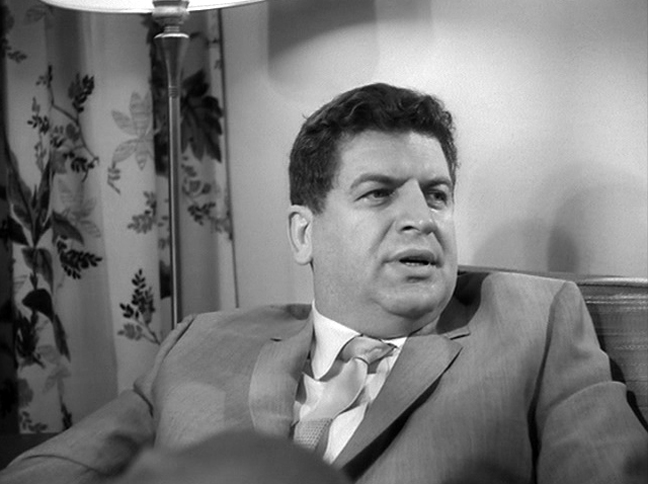 Stanley Borden, in ‘Olga’s Girls’
Stanley Borden, in ‘Olga’s Girls’
Do you remember what you got paid for the Olga films?
It paid reasonably well because I did a few of them, and on top of the directing, I also did the writing and the editing. And I did the promotional pieces, the trailers for the films, and so on.
It was just a flat fee though. I never got a percentage or anything like that.
Did you ever have any premiere for the Olga films?
I think Stanley had some sort of premiere at one of the 8th Avenue theaters.
Did you go and see the films in the theaters?
No. I’ve never seen the films. The only time I saw them was when I was editing them. I never went to see them on the big screen.
I saw them plenty of times when we were adding the music and the effects.
White Slaves of Chinatown was protested by a Chinese civic association in a letter to the Mayor of New York, which described it as “morally offensive and a distorted reflection on Chinatown.” As a result the title was change to ‘Olga’s White Slaves’.
Do you remember finding out that the films were becoming successful?
After we made the first film, George kept saying, “It’ll do something. It’ll do something.” He obviously had good instincts. Nobody thought of doing more than one film, but he was the one that pushed for sequels.
He said, “Let’s do a second one,” and then there was a third… and a fourth. He gave them similar titles, and got back Audrey Campbell to feature in them.
George would come to me and say, “Look, this is the idea. Can you put an outline together?”
As far as I know this was the only series of its kind in the country. That was probably also the reason why the authorities decided to go against the theaters showing them.
There was never really any nudity in these films… they were just what you’d call skin flicks, but at the time that was enough for them to be targeted.
Were you personally worried?
Yeah, we were all concerned. They put a lot of pressure on people. Everybody was concerned. But Stanley reassured us and said, “If anything happens, I’m going to be there to back you up.” And his word was good.
Stanley was an honorable human being. He was one of the best human beings I happened to meet in that business. He was honest. You knew where you stood with him. We were comfortable just knowing he was there.
The theaters were busted for playing the Olga films; it was a nuisance – they did it because they wanted to shut down the theaters.
We went to court several times, and I remember seeing Al Goldstein there at the same time. He was involved in a different case but it was the same type of issue.
We waited until the U.S. Supreme Court heard these obscenity cases – and made a judgment that it was not pornography. If these cases had been lost, we’d have been fighting it forever and maybe would have had to go to jail.
That changed the level of censorship at the time. After that all hell broke loose because everybody was involved with exploitation movies, or skin flicks, or whatever you wanted to call them.
But had the U.S. Supreme Court come down against us… then we would have been in serious trouble.
*
4. After ‘Olga’
The Olga films were very successful.
Yes.
I didn’t know Barry Mahon at all but his productions were more expensive. He did films in color and had better locations – at the beginning anyway. He spent more money. But whether they made more money, I don’t know. I don’t think they got the same distribution as we had. We had a good distribution system.
I never knew many of the others making films but we were aware of each other because it was a pretty small community… people such as Joe Sarno, Mike Findlay, and Chelly Wilson. Chelly was a nice person. A gruff voice but a good woman. She had a Greek restaurant in New York too.
All the time you were making these films, you were still working in other areas?
Yes, I was producing and editing trailers and writing copy for them. These exploitation films were just a sideline. We’d often do them over short periods.
I’d been living in Jamaica Estates in Queens, and then I moved out with my family to Long Island.
You then went on to make further films – such as All Men Are Apes!
Yes, I got involved with that one because I knew one of the producers. That was Barnard Sackett. He wrote it with another writer, Charlie Mazin.
All Men Are Apes! (1965) (‘The shock story of beauty in a city’s jungle of beasts!’) tells the story of a stripper whose life goes off the rails when her creepy agent teams her up in a novelty act with Harry the Ape.
The film has exterior period shots of Greenwich Village, including famous clubs like the Crazy Horse, the Back Fence, the Duplex and the Bitter End. It also features Tom O’Horgan, who went on to significant fame and fortune as the director of the Broadway hit musicals Hair and Jesus Christ Superstar.
Barnard and Charlie were nice guys. They said, “We’re going to do something strange and crazy.” It was a wacky, dopey film, but it was the time to have a little fun doing crazy things too. Once again we shot in a very short time.
Do you remember a film called The Peek Snatchers?
I don’t. I’ll tell you something. I remember the early ones that I made with Stanley Borden, like the Olga series, because they were the ones that we got started with. But after a while, the films became almost commonplace.
I do remember Mondo Oscenità however. I did a lot of editing to put that together!
Mondo Oscenità (1966), directed under the pseudonym of ‘Carlo Scappine’, is a cut and paste pseudo-documentary about the history of censorship in cinema and the changing mores of the 1960s. It is mostly made up of footage from other of Joseph Mawra’s films and is mainly of interest today as it is the only way to see footage of Mawra’s lost film, Mme. Olga’s Massage Parlor.
What do you remember about the film Murder in Mississippi?
An attorney wrote that script, Herbert Altman. It was pretty good.
Murder in Mississippi (1965) was the first of several films depicting the real-life murders of three young civil rights workers in Philadelphia, Mississippi in 1964.
Despite the unusual choice of material for an exploitation film and its obvious low-budget limitations, it is a surprisingly effective and human take on the events.
My memory isn’t good for that one. It was another one made on a shoestring budget, and we had to finish it in a few days. We shot it all at Werner Rose’s place in Jersey as well. Werner made all the sets there; he had a pretty extensive series of buildings that that we used.
We brought everyone from New York to appear in it.
*
5. Filming in Florida
In the late 1960s, Joseph Mawra shot a film in south Florida – Fireball Jungle (1968), credited to a ‘Joseph G. Prieto’.
How did the film in Florida come about?
I became involved with a different group of producers. They were based in Miami and they owned some theaters in Atlantic City and in Florida. I think they had one or two theaters in New York on 42nd Street, as well.
I met them in Stanley’s office. They said, “We’re putting together a film. Do you want to come down to Florida and take a look? You can review the script – maybe you can give us a budget breakdown – and you could direct it?”
That’s how it started. It was all word of mouth.
This was Fireball Jungle.
Yes, that was the one I had the problem with.
Fireball Jungle (1968) tells the story of a stock-car racer who goes after a troublemaking driver who killed his brother, and his gangster friend who are putting the squeeze on racetracks across the South. It featured John Russell, and also Lon Chaney Jr. in one of his last acting roles.
How was the experience of making Fireball Jungle different from the New York films?
It was bigger budget, and we had a good crew for that one. And we had Joie Chitwood, who was the stunt driver. He did a great job. We shot it in Tampa.
You mentioned problems; when did they start?
After I completed the film, the producers inserted stock footage of car races that I never shot. They cut in a couple of reels. It was newsreel footage of other races and it really didn’t do much for the film.
And from what I understand they also had a singing dog. There was no reason for it… at least I couldn’t find a reason for it.
I don’t know why the producers did that to my film. I didn’t do anything about it at the time because I just didn’t want to get involved.
A year or so later someone called me and told me they’d taken my name off the credits of the other two films that I made in Florida. They added someone else’s name.
And the name they added was José Prieto?
Yes. He was also in the film business, a director. So things got all muddled up.
So some of the films that have the ‘José Prieto’ credit are yours, and some are not?
Yes, I worked on a couple of those films where you see a Prieto credit, but not all of them.
Do you remember a film called Miss Leslie’s Dolls (1971) that was shot in Florida – and is credited to Joseph G. Prieto?
No, I don’t. That doesn’t ring a bell.
*
6. Epilogue
After the events in Florida you made one more film?
That was in Europe and it was called Rain for Dusty Summer (1971). We did it in Spain with Ernest Borgnine. I was the executive producer. It kept me busy for a while and we had a lot of fun.
It was done in Barcelona Studios with an all-Spanish cast – mostly for the European market. I don’t know if it got much of a release in the U.S.
It was a major film. Ernest Borgnine was a big star at that time, and so it was a big production. We had a good budget and we were shooting for three months or so. I was involved from the beginning to the end of the production.
In the 1970s there are few credits for you. Was that because you were doing other kinds of film work then?
Right. I kept working producing, editing and writing the copy for trailers. And you don’t get credits for doing trailers, just recognition in the industry.
I got more involved with films with larger budgets. I did a lot of trailers with a producer who worked for Embassy Pictures and other companies.
Embassy Pictures belonged to Joseph Levine, an American film, distributor and financier. His many successes included The Producers, The Graduate, and Carnal Knowledge. He was also responsible for the U.S. releases of Godzilla, King of the Monsters! and Hercules, which helped revolutionize film marketing.
Did you enjoy the work?
Yes, I liked it a lot. That was the very creative end of that. You have to get the people into the theaters, so I spent a lot of time in the studios writing and producing the trailers.
The trailers kept us busy. Typically when I got a call for new work they’d say, “I saw one of your trailers. Can you come down here and we’ll talk about a project we need help with.” I’d help producers put films together.
I did some work editing scripts too, some rewrites, and so forth.
And that’s how I worked. I went from one project to another, all through word of mouth.
Did you lose touch with George Weiss?
We lost contact when he stopped making the films at the end of the 1960s. By that time he was ready to retire and he wasn’t very healthy.
The same goes for Stanley. I didn’t do any more of the sexploitation films so our paths didn’t cross any more. I heard he worked with Mike Findlay on this idea for a 3-D camera for a while before Mike was killed. I met Mike a few times, and he was nice person.
What did you do in later years?
I did a young children’s TV program to teach kids how to tell stories through writing. It taught them how to write little scripts.
I created it, and I set up the whole animation program for television. I eventually sold it to a marketing company and I think it’s still running.
You have never spoken about your filmmaking experience in the 1960s before. Why is that?
You know… I haven’t done anything like this in 50 years. I was asked a few times but I never had any interest.
You asked me at the right time, I guess.
What do you think about the fact that the Olga films have endured for over 50 years?
It’s strange. I find it hard to believe. I had no idea until you contacted me.
We never set out to make anything that would be remembered – it was just about getting quick product into the theaters.
*
*
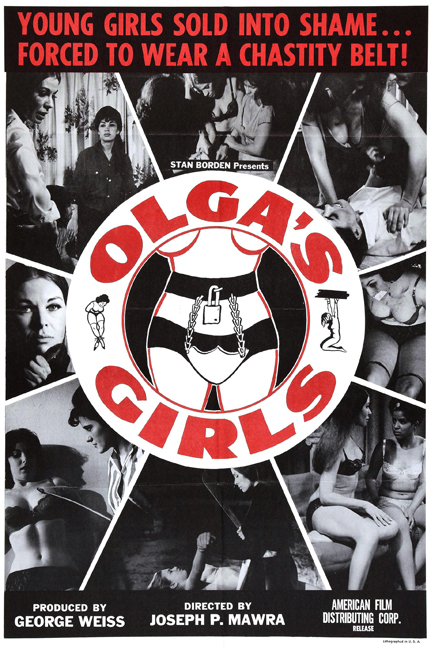
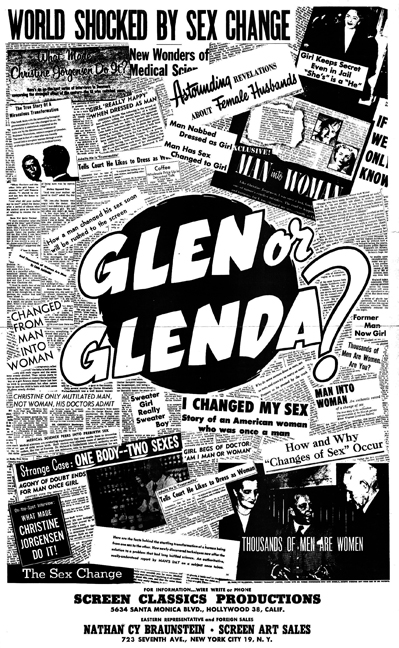
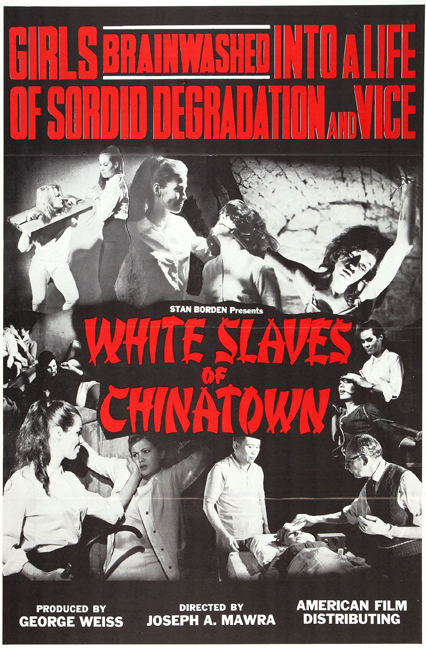
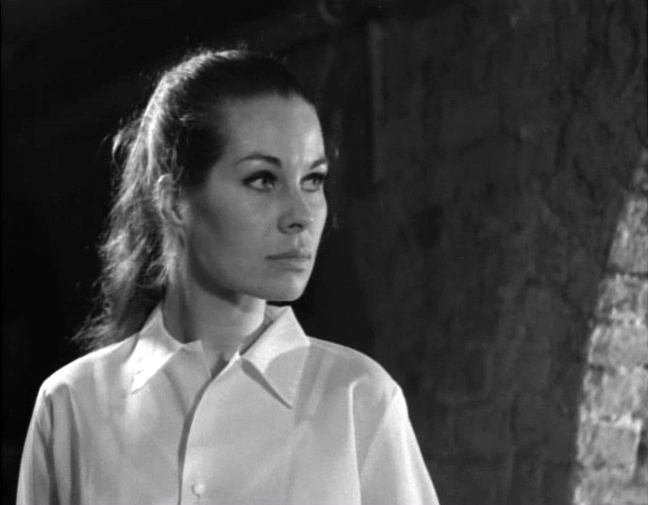
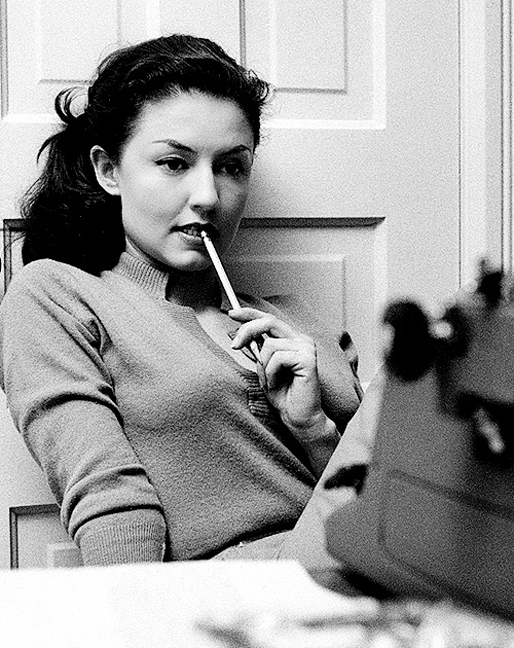
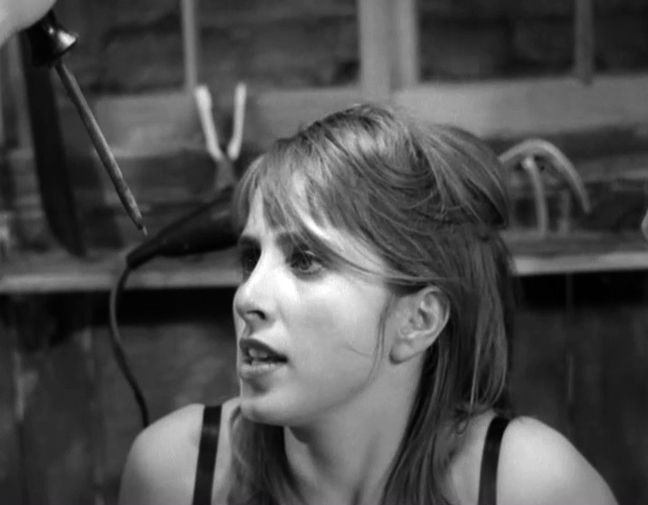
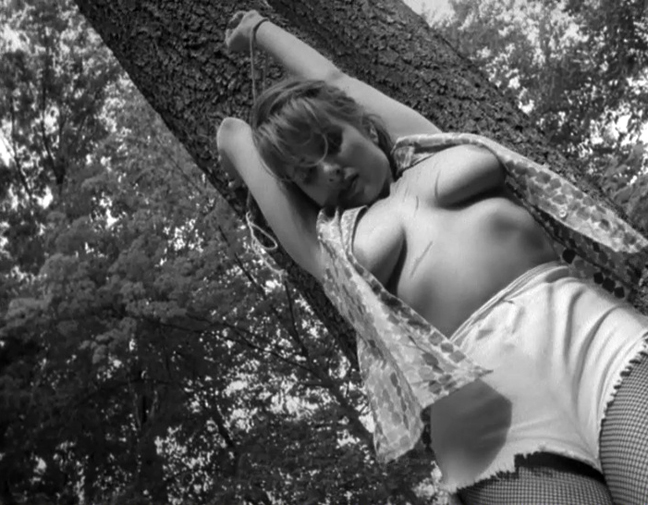
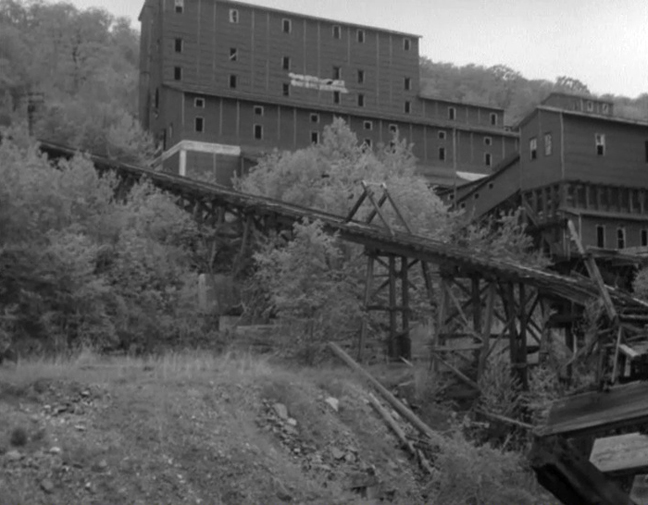
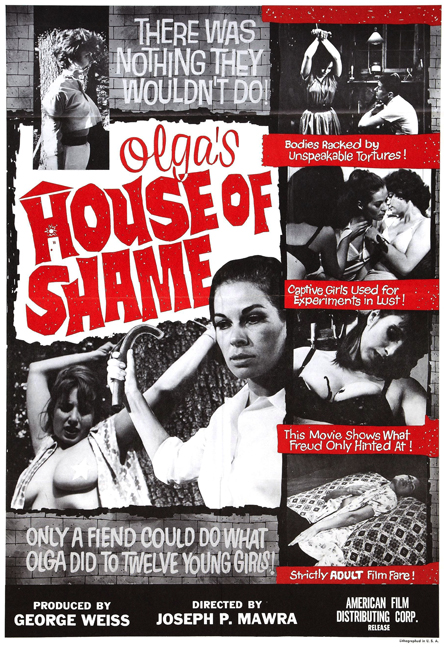
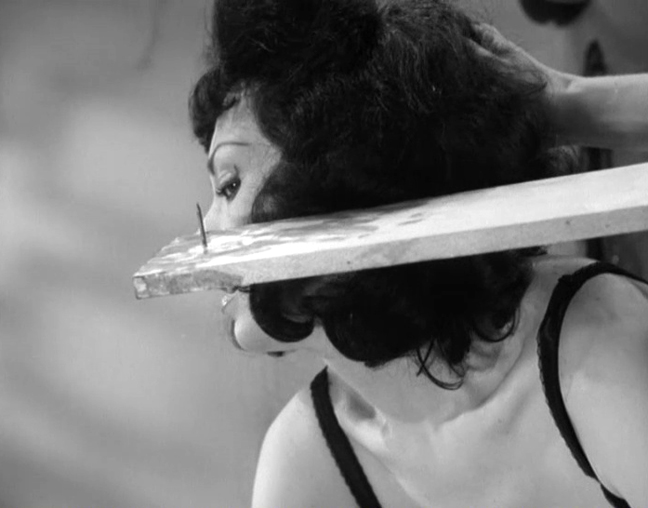
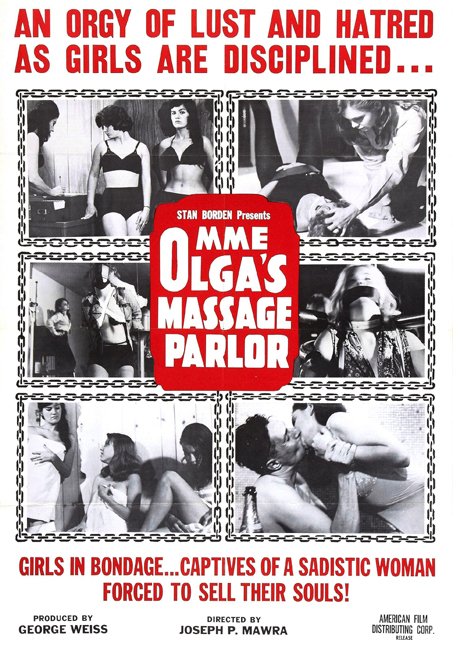
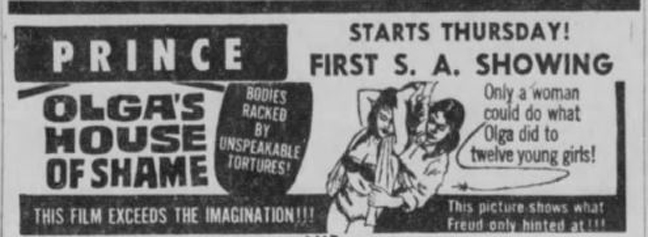
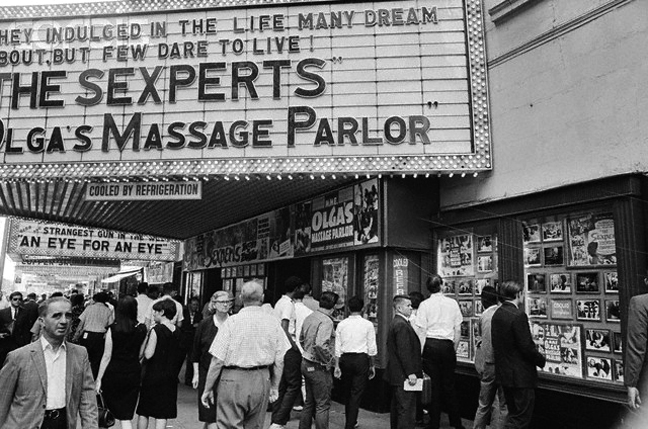
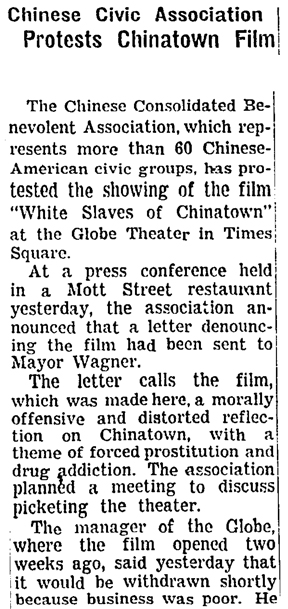
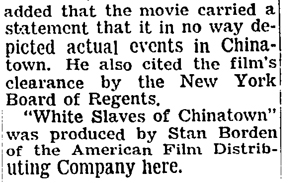
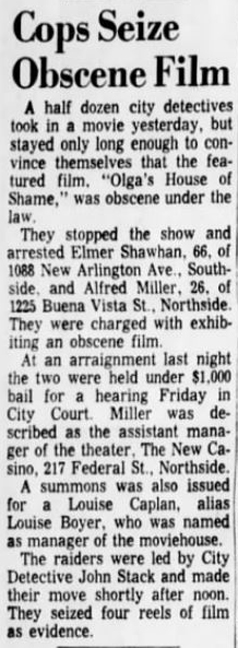
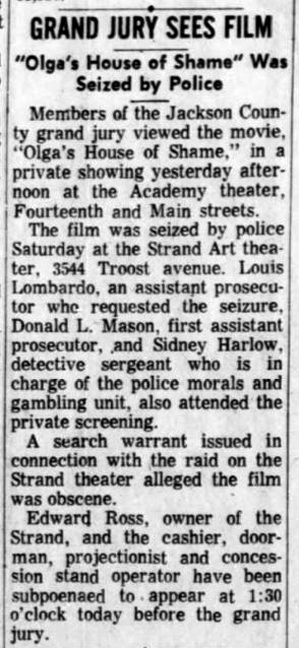

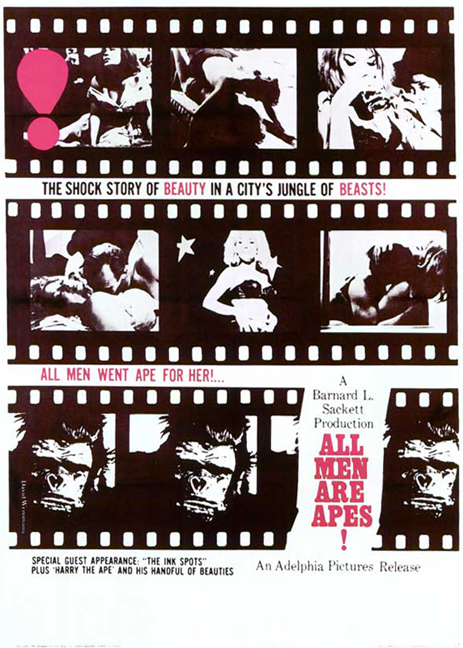
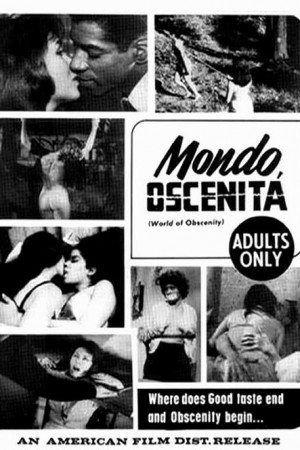
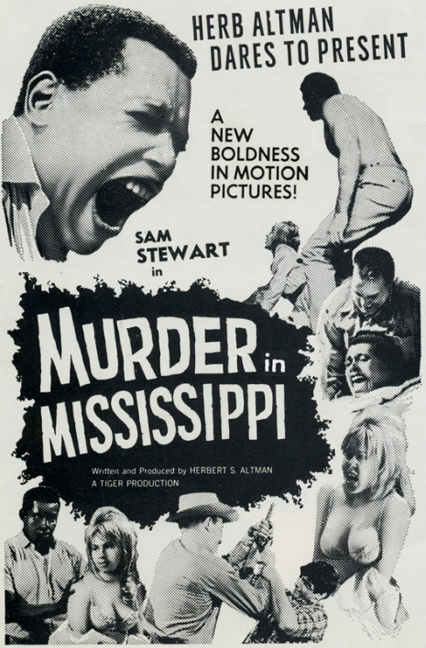
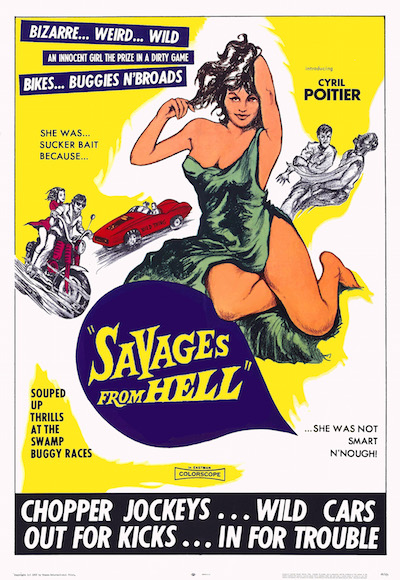
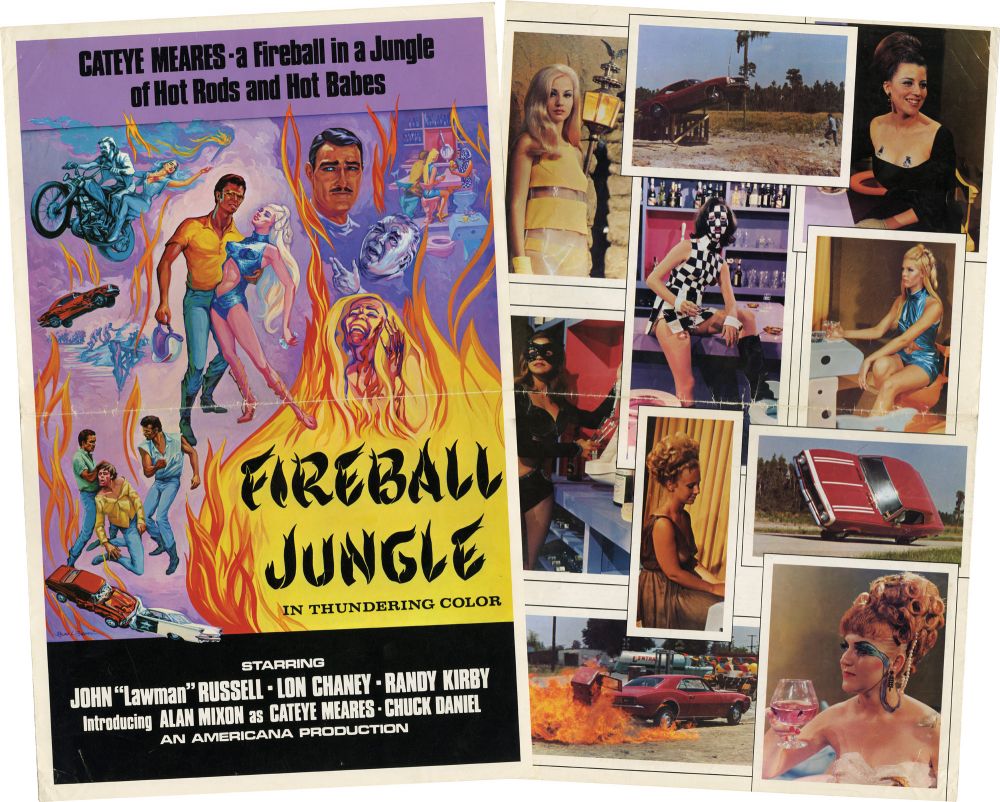
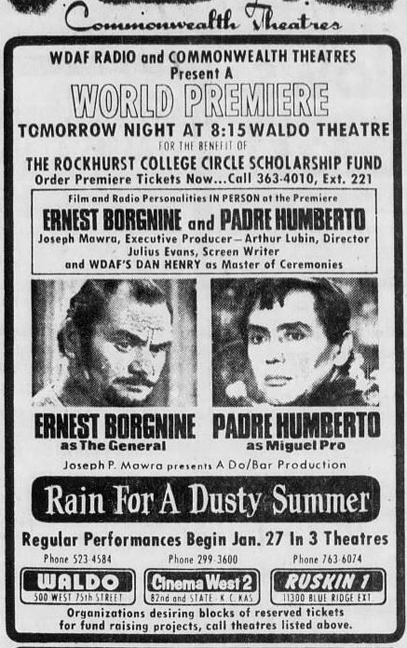
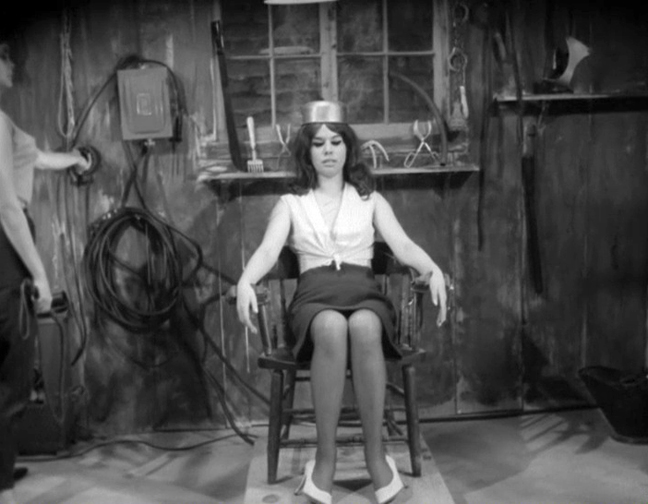
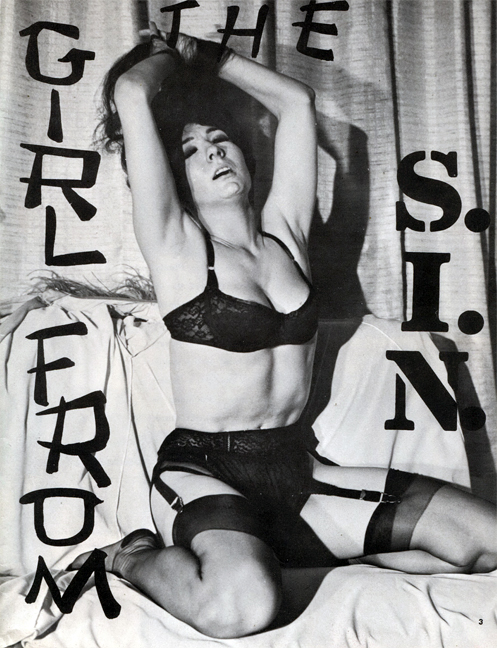
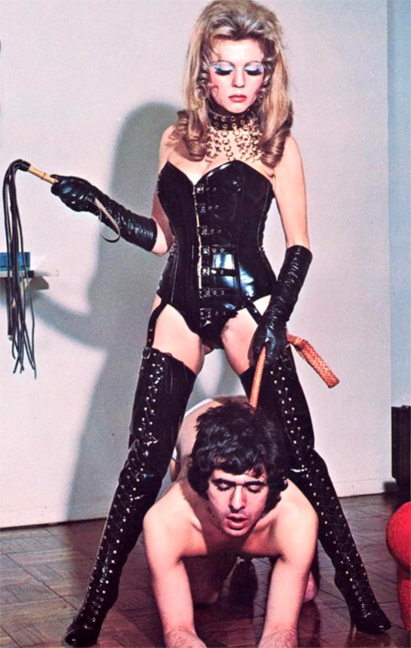

You found Joe Mawra????!!! Scoop!
I had heard from a number of sources that he passed away many years ago – this is is amazing!
Outstanding work guys. As usual. Unbeliveable job.
Thanks for keeping it real because this is real history being presented here.
There has been so much bad info on the ‘net perpetrated by so-called ‘adult film historians’ (what does that even mean?!)
Case in point the DVD review site where George Weiss is spelt Weis, the influence of Irving Klaw is taken as a given, the settings as being in upstate New York, that Joseph Mawra was later called Joseph Pietro, etc. etc.
All wrong!
After 50 years, the truth finally starts to emerge.
I believe DVD Maniacs is the site you’re referring to.
Is there no mystery the Rialto Report can’t solve ?
Great scoop Rialto Report! Another piece of the Sixties Sexploitation puzzle found!
Incredible. How the Rialto Report can find these filmmakers is truly amazing,
Remarkable and impressive detective work once again. This site continues to amaze and delight!
Great article, and “Shanty Tramp” is my all-time favorite exploitation title!
Absolutely amazing! It had never dawned on me that George Weiss of GLEN OR GLENDA infamy was the very same – on the other coast – who later produced the OLGA series. (And worth mentioning that Radley Metzger’s Audubon films had a hand in distributing part of the OLGA series.)
The set photo with Weiss in the post also features William C. Thompson, cinematographer of most of Ed Wood’s 50’s films. Anyone know what film that photo is from?
Kudos to the Report, as always!
Fascinating. Excellent. But no question or mention of working with great and tragic Lon Chaney Jr?
Wonderful article! Shame he couldn’t shed any light on MISS LESLIE’S DOLLS. This is definitely one of my holy grails; apparently there’s only one surviving print and it was screened in London roughly seven years ago. Hoping whoever is holding that print would have it scanned (and restored as much as possible) for a DVD release… Code Red or Vinegar Syndrome could have a hit with this!
Great article! Thank you for tracking down and interviewing Mawra! However, Mawra did not direct SHANTY TRAMP or SAVAGES FROM HELL. Both of those films were directed by the actual José Prieto. He was cuban. I know this because I filmed hours of interviews with the cast and crew of SAVAGES and SHANTY, as well as tracked down behind the scenes photographs from those films. I also believe he directed MISS LESLIE’S DOLLS, but I cannot confirm this. But thank you for the wonderful interview! That is one exploitation mystery solved!
Amazing interview,for hopefully we’ll someday possibly be seeing the likes of MISS LESLIE’S DOLLS,RAIN FOR DUSTY SUMMER,and the other mentioned titles resurfacing from obscurity and onto DVD/Blu Ray in the near future.
Great article, but does anybody know anything more about George Weiss? IMDB gives no date of death, but he would be 95 if he’s still living. Wikipedia says that he was alive when Tim Burton’s Ed Wood was released and IMDB credits him for an Austrian film released in 1995, his first and only credit since the ’60s. Any chance you guys can get to the bottom of this mystery or possibly even talk to him if he’s still around?
Yet another mystery solved by the RIALTO REPORT… Hercule Poirot, eat your heart out!
Love the OLGA flicks ( what would Mr. Poirot think of those films?.. ha-ha ).
Finally, I get to know who really directed, and co-wrote, SHANTY TRAMP.
To Mr. West, Ms. Hall, and everyone else that has worked on the RIALTO REPORT, you folks are awesome, and I mean that!
My wife was helping out at a New York Bar Association function in the city, back in 2002 or so. A striking, older woman sat with her and assisted in the reception of all the lawyers.
She told my wife she did it to “Get out and have something to do”.
She also said she made movies years ago, but “You’re too young to remember”, she told my wife.
Her name was Audrey Campbell…